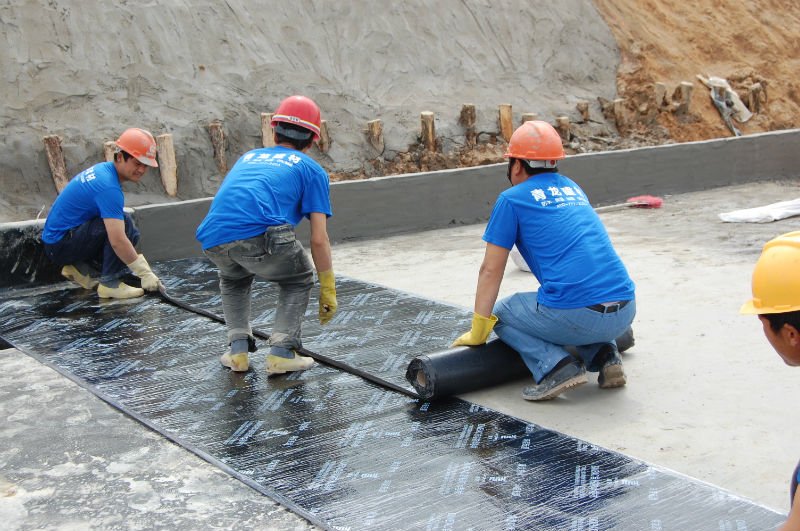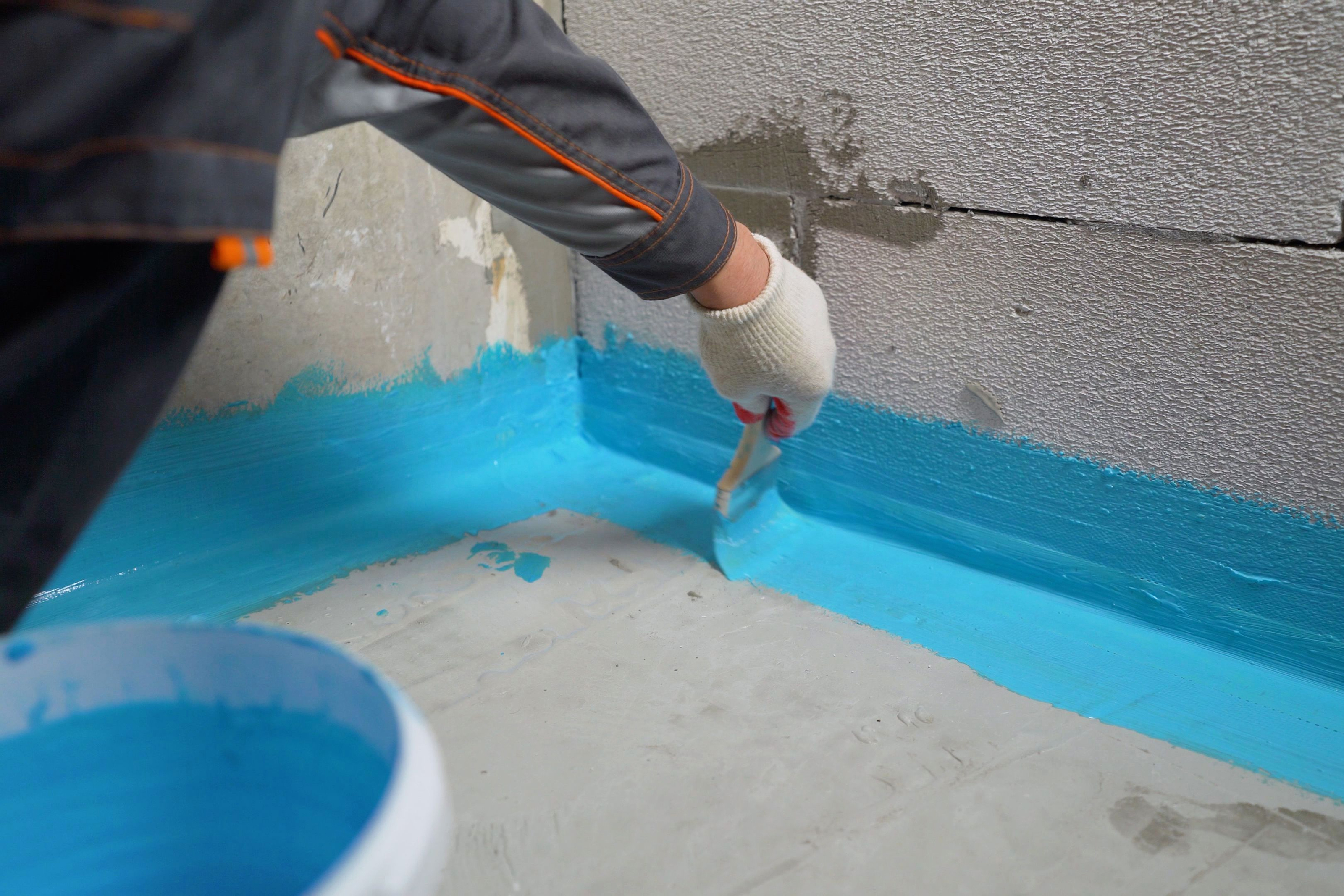How Waterproofing Functions: A Detailed Consider Methods and Technologies
Waterproofing is necessary for safeguarding structures from moisture-related damage. It entails various methods and innovations that produce barriers versus water intrusion. Conventional techniques, such as compressed clay, exist side-by-side with modern advancements like liquid-applied membranes. Understanding the subtleties of these methods is essential for effective application. Nonetheless, the performance of any kind of waterproofing solution hinges not only on the strategies used yet likewise on recurring maintenance and evaluation. What are the essential variables that influence long-lasting performance?
Understanding the Essentials of Waterproofing
Waterproofing is a crucial procedure that secures frameworks from water intrusion, which can bring about significant damages gradually. This approach involves the application of different materials and methods designed to produce an obstacle versus moisture. The main objective is to stop water from passing through surface areas, which can create damage, mold and mildew development, and architectural instability.Various factors influence the choice of waterproofing technique, including the type of structure, its location, and environmental problems. Understanding the physics of water movement and the residential properties of various materials is essential in choosing a reliable waterproofing solution.Effective waterproofing not only safeguards buildings but additionally enhances their longevity and stability. Commonly, it is incorporated right into the design phase of building to ensure complete security. As understanding of water-related concerns grows, the value of understanding waterproofing principles comes to be increasingly clear to engineers, contractors, and building proprietors alike.
Conventional Waterproofing Methods
Traditional waterproofing methods have been used for centuries, counting on time-tested strategies and materials to guard frameworks from water damages. Among the earliest approaches includes using clay, which, when compressed, creates an all-natural barrier against dampness. In addition, bitumen, a sticky, black product stemmed from petroleum, has been employed for its waterproof homes, commonly put on roofings and foundations.Another strategy includes the application of lime-based plasters, which provide a breathable layer that allows moisture to get away while avoiding water access. Thatch roofing, a typical approach still seen in some cultures, supplies excellent waterproofing because of its securely packed straw layers.Moreover, using stone and block has projected, as these materials are naturally immune to water when properly mounted. Overall, typical waterproofing methods emphasize the value of picking ideal materials and building and construction techniques to enhance durability versus water intrusion.
Modern Waterproofing Technologies
Improvements in modern waterproofing innovations have reinvented the way frameworks are protected from water damage. Innovative techniques such as liquid-applied membranes and sophisticated sealers have improved the performance and adaptability of waterproofing options. These technologies permit for seamless application, minimizing the risk of leaks and guaranteeing thorough insurance coverage over complex surfaces.Moreover, the combination of smart modern technologies, such as moisture sensing units and automated surveillance systems, enables real-time assessment of waterproofing performance. This aggressive method helps with prompt upkeep and decreases long-lasting repair service costs.Additionally, advancements in spray-applied coatings offer fast application and excellent adhesion, adapting to various substratums while giving durable defense. Techniques like polymer-modified systems further enhance adaptability and resilience, making them ideal for varied atmospheres. On the whole, modern-day waterproofing innovations not just alleviate water invasion however additionally add to the durability and sustainability of structures, marking a considerable shift in the market.
Materials Used in Waterproofing
The performance of waterproofing remedies greatly depends on the products utilized in their application. Numerous materials are used to create obstacles against water ingress, each with distinct homes fit for different settings. Commonly made use of materials include membrane layers, finishings, and sealants.Liquid-applied membranes, frequently made from polyurethane or acrylic, create a smooth barrier that adjusts to intricate surface areas. Sheet membranes, commonly built from rubber or thermoplastic, deal toughness and are optimal for larger areas. Additionally, cementitious waterproofing products, made up of cementitious compounds, provide excellent bond and flexibility.Sealants made from silicone or polyurethane are essential for joints and seams, guaranteeing extensive security. In addition, sophisticated products, such as geo-composite membrane layers, incorporate numerous features, boosting performance. Generally, the option of waterproofing materials is important in attaining resilient and reliable water resistance, customized to specific job needs and ecological conditions.
Typical Applications of Waterproofing
Waterproofing plays an essential duty in various fields, ensuring the longevity and stability of frameworks. Typical applications include property solutions that safeguard homes, business infrastructure that safeguards businesses, and commercial setups that need durable protection versus moisture. Understanding these applications highlights the importance of waterproofing in keeping both safety and security and functionality across different settings.
Residential Waterproofing Solutions
Numerous house owners deal with obstacles with moisture intrusion, making efficient household waterproofing services crucial. Different methods exist to address this concern, including interior and exterior waterproofing systems. Inside options usually entail the application of sealers and finishes to cellar walls, which aid protect against water infiltration. Exterior approaches normally consist of the installation of drainage systems and water-proof membrane layers that draw away water far from the foundation.Additionally, house owners may think about sump pumps to eliminate water buildup and dehumidifiers to regulate humidity levels. Correct grading and the use of rain gutters additionally play a vital role in handling water circulation around the home. By executing these methods, homeowners can greatly lower the danger of water damages and mold development, making certain a completely dry and secure living environment.

Business Facilities Security
Efficient waterproofing options play a critical role in the protection of industrial facilities. Basement waterproofing Omaha. These techniques are vital for protecting buildings, auto parking frameworks, and bridges from water damage, which can jeopardize architectural stability and lead to expensive repair services. Common applications consist of the installation of membranes, coverings, and sealants that produce obstacles versus dampness seepage. Locations such as cellars, roof coverings, and outside walls are usually focused on to assure long life and resilience. In addition, waterproofing systems can boost power performance by protecting against water-related concerns that may result in mold development and damage. By carrying out durable waterproofing measures, building owners can protect their investments and maintain operational efficiency, ultimately adding to the overall sustainability of industrial centers
Industrial Applications Review
While different markets face special obstacles, the requirement for trusted waterproofing options stays a constant in industrial applications. Industries such as manufacturing, building and construction, and power frequently run into environments where moisture exposure can endanger structural integrity and operational performance. In producing facilities, waterproofing is important for securing equipment and products from water damage. In building, it safeguards structures and basements against groundwater infiltration. The energy field depends on waterproofing for the security of equipment in hydroelectric plants and overseas structures. Furthermore, food processing sectors utilize waterproofing to assure hygiene and compliance with safety standards. On the whole, effective waterproofing options are important for boosting resilience, safety, and productivity across various industrial settings.
Maintenance and Durability of Waterproofing Solutions
Waterproofing services are developed to provide long-term defense versus moisture use this link intrusion, normal upkeep is crucial to guarantee Get More Info their performance and longevity. Routine evaluations play a significant role in recognizing possible problems such as cracks, peeling, or indicators of water damage. Attending to these troubles quickly can stop additional degeneration and expensive repairs.Additionally, cleansing the surface area of waterproof areas helps eliminate dirt and particles that can endanger the stability of the waterproofing obstacle. It's also advisable to reapply safety coverings or sealers as advised by manufacturers to preserve suitable efficiency. Ecological variables, such as UV direct exposure and severe weather, can affect the lifespan of waterproofing products, making routine evaluation important
Often Asked Concerns
Can Waterproofing Be Applied in Winter?
The inquiry of applying waterproofing in cold weather increases issues about attachment and curing. Lots of products may not carry out at their finest in low temperatures, requiring careful option and factor to consider of particular standards for effective application.
The Length Of Time Does Waterproofing Generally Last?
The period of waterproofing effectiveness differs based upon products and environmental elements. Normally, it can last from five to 10 years, however regular maintenance and examinations are vital to assure peak efficiency and long life.
Is DIY Waterproofing Effective and Safe?
The efficiency and safety of DIY waterproofing depend on various variables, including worldly quality and application technique. While some people achieve satisfying results, others might experience concerns that compromise lasting security and structural stability.
What Are the Indicators of Failing Waterproofing?
Indications of stopping working waterproofing include noticeable water stains, peeling off paint, mold development, mildewy smells, and moisture in wall surfaces or ceilings - Landscape drainage Omaha. These go now indications suggest endangered obstacles, requiring timely inspection and prospective removal to stop additional damage
Exactly how Do I Choose the Right Waterproofing Professional?
